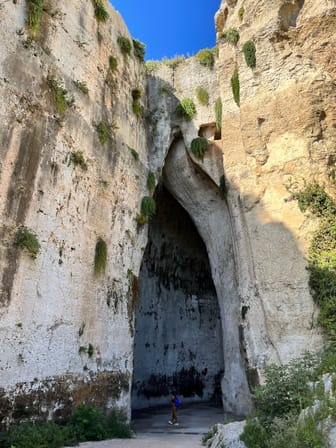Ortigia Island Siracusa, Sicily | FREE Walking Tour
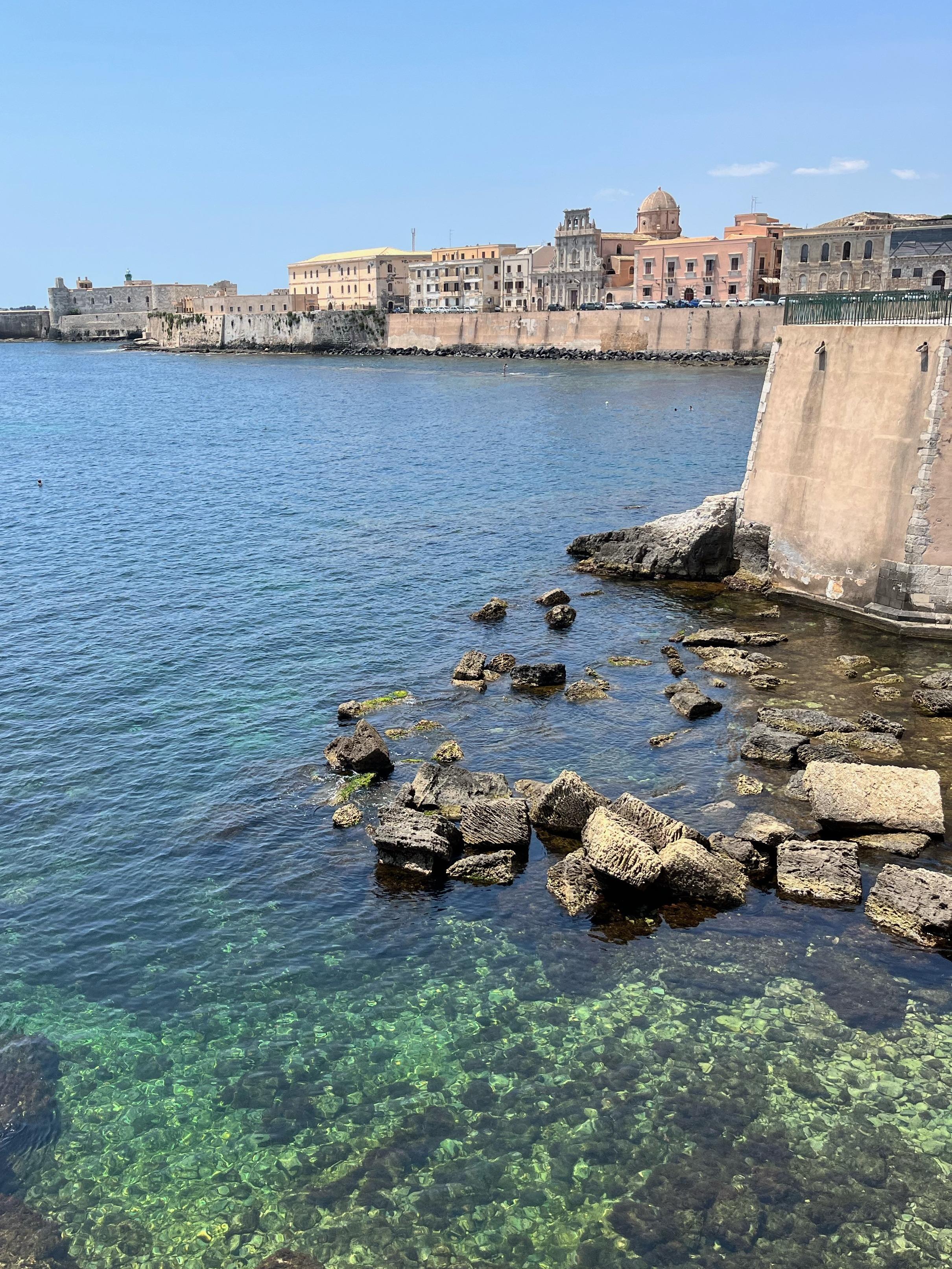
Introduction to Siracusa
Beginning when it was settled by Greek colonists from Corinth in the 8th century BC, Siracusa (Syracuse) rose to become one of the most powerful and beautiful cities in the Mediterranean. Siracusa was much larger than its modern counterpart and the most important city of all the Greek colonies, rivalling even Athens for influence across the Mediterranean. Even before the Greeks made landfall, indigenous Sicel people lived here and, since the Greeks, many other conquers have controlled this strategic city. Today, you can explore relics of the rich, 3000 year history featuring remnants of many of the cultures that have conquered Sicily throughout the centuries.
Ortigia:
One of the ancient quarters of the Greek city, Ortigia is located on an island separated from the mainland by a narrow canal. Even when the rest of the ancient city was deserted for centuries, Ortigia remained the heart of life here. Crossing the bridge onto Ortigia today is like stepping into another world from the modern city: one immediately catches glimpses of the columns of the Temple of Apollo between the Baroque "palazzi", street vendors call out their goods, and pedestrian only streets allow visitors to wander freely.
Walking tour Ortigia Island
FYI: Along this tour, we suggest several museums, churches and historical sites that you can choose to visit, allowing you to create a tour that meets your particular interests. Please check opening times and entrance fees before beginning your trip.
We begin our tour at the Temple of Apollo, found in Largo XXV Luglio, a square just across the bridges between the mainland and Ortigia island.
The Temple of Apollo:
The Temple of Apollo is one of the oldest Doric temples in Sicily and has a long history of a place or worship. Today you can still get a sense of the grandeur by viewing the foundation of the temple, as well as see standing columns and a wall added to the structure later.

On Friday, Saturday and Sunday in the streets around the Temple of Apollo, you will find an open-air market where you can buy local products like spices, fresh produce, seafood and more.
Walk toward the remaining wall and columns of the Temple of Apollo and at the end of the piazza turn right on narrow Via Dione. This is the ancient sacred road of Ortigia, connecting the Temple of Apollo with the area around the Temple of Athena.
Piazza Archimede
Walking south on via Dione you will reach Piazza Archimede, which opens to the Fountain of Diana. This piazza is ringed by several grand "palazzi". The fountain at its center depicts the Greek goddess Artemis (Diana to the Romans) saving her follower, the nymph Arethusa, from a lustful water God.
You'll learn what became of Arethusa a little further into our tour.
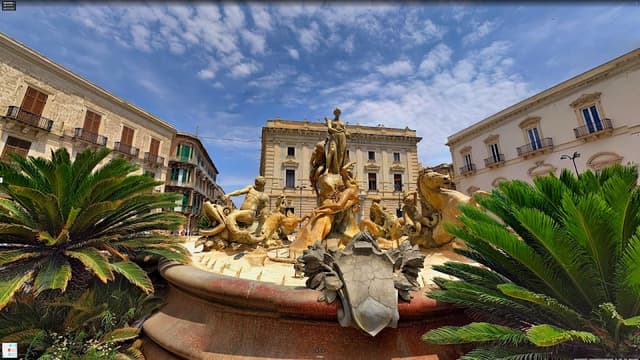
Exit the piazza onto Via della Amalfitania and turn left onto narrow Via Saverio Landolina. As you walk south on this street, you'll find yourself surrounded by abandoned churches as well as shops for souvenirs and sweets. Step into the sun at the end of the street, and find yourself in the bright, magnificent, baroque Piazza Duomo.
Piazza Duomo
Like all over Italy, the central piazza is the beating heart of the city. At any given time, one is likely to find street performers and vendors, busy cafes and bars serving gelato, granita or aperitivo, and - especially as the evening descends on a summer night - locals gathering to catch up in this wonderful scene. Piazza Duomo is ringed with stunning baroque architecture, and hosts some of the key sights of Ortigia.
Since the ancient time, this piazza has been the center of Ortigia: once the important temples of Athena and Artemis stood here and are now integrated into the piazza if you know where to look.
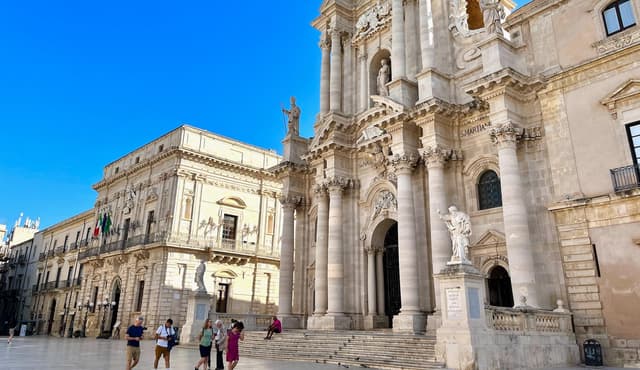
The main monuments of Piazza Duomo:
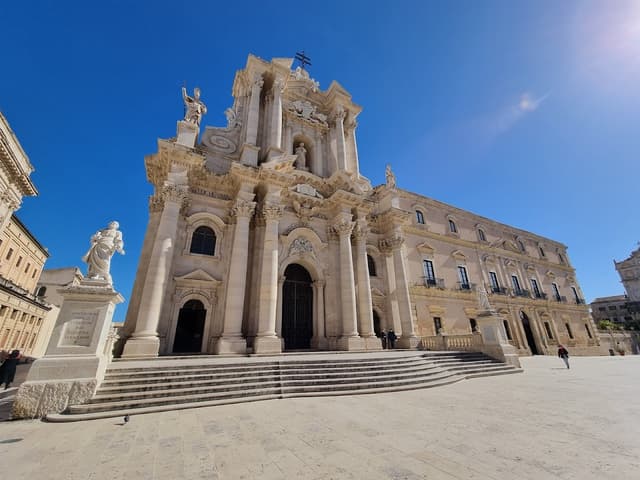
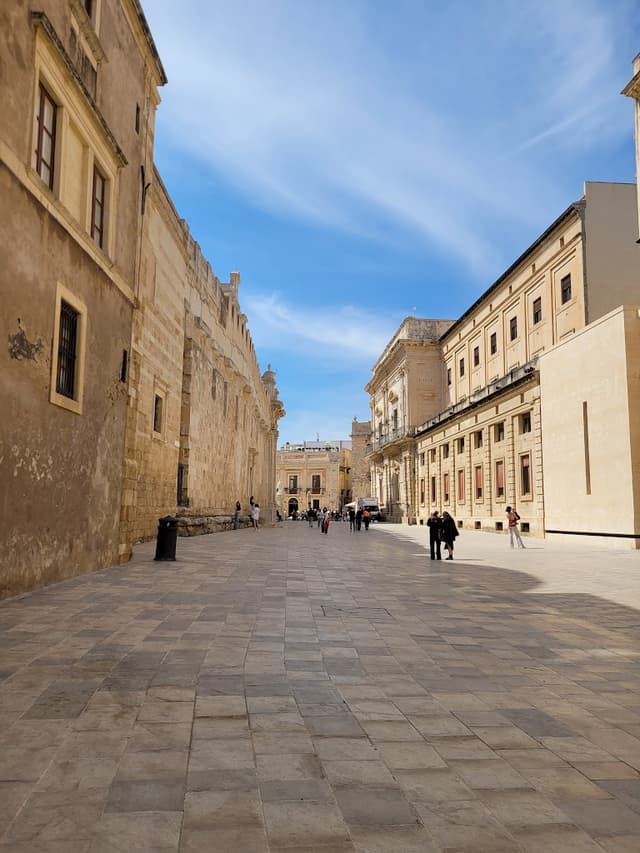

Along the Lungomare
Leaving Piazza Duomo from the south side of it, to the right of Chiesa di Santa Lucia alla Badia, Via Pompeo Picherali descends toward the sea and opens to a view of the ancient spring - Fonte Aretusa in Italian - which has supplied the city of Ortigia with freshwater since it was first settled.
This cool, mythical spring creates a unique ecosystem, thanks to the presence of the papyrus. It is also where you learn the fate of Arethusa, the water nymph pursued by the river god: in order to save her from his advances, Artemis transformed Arethusa into a freshwater spring just a few meters away from the sea, bequeathing in this way the city with one of its greatest gifts as well.
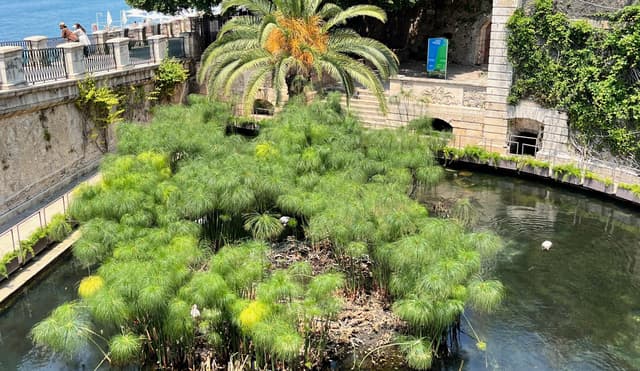
From the Fonte Aretusa, stroll south along the Lungomare, taking in the views of the Porto Grande bay where Archimedes once performed his experiments. The restaurants and bars along this walkway will all have sunset views as evening comes.
At the end of the Lungomare, take a left. Through a gate to your right is the Castello Maniace which was built in the 13th century by the emperor Frederick II, king of Sicily from 1198 to 1250 AD.
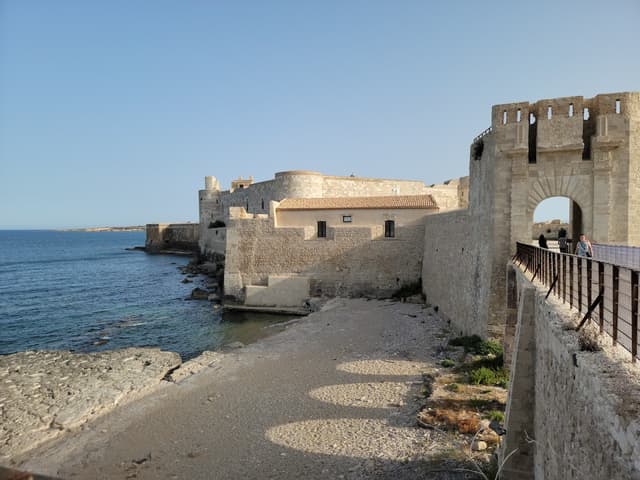
Coming to the eastern side of the island, follow the Lungomare with a view of the open sea in this direction and pause above the small, public Cala Rossa beach.
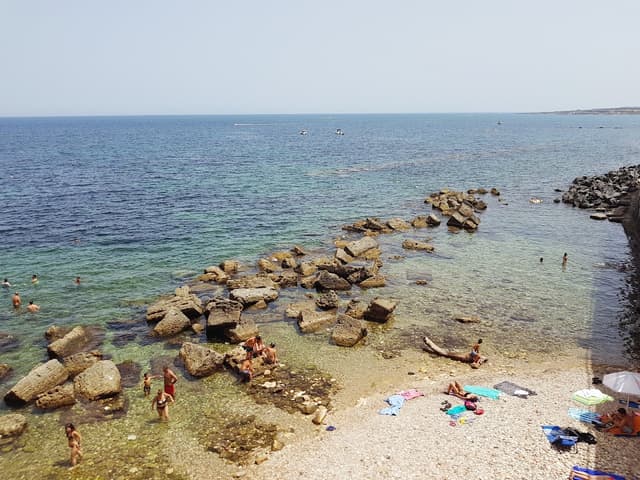
The Giudecca neighborhood
Continuing northeastward, you find yourself in a tangle of alleyways surrounded by baroque balconies and sidewalk gardens; the Giudecca neighborhood, a perfect place to get lost for a while and to take in the atmosphere of the historic neighborhood.
In order to get there, from the street Lungomare d'Ortigia, just above Cala Rossa beach, take a left on via Roma, walk to via del Teatro and turn onto it, on the right. After passing the city theater - Teatro Comunale di Siracusa - proceed straight on via Larga and at the end of it, turn left onto via G.B. Alagona, a narrow street where you will cross paths with a recently discovered window into another layer of the long history of Siracusa, the Mikveh that used to be the Jewish Ritual Bath.
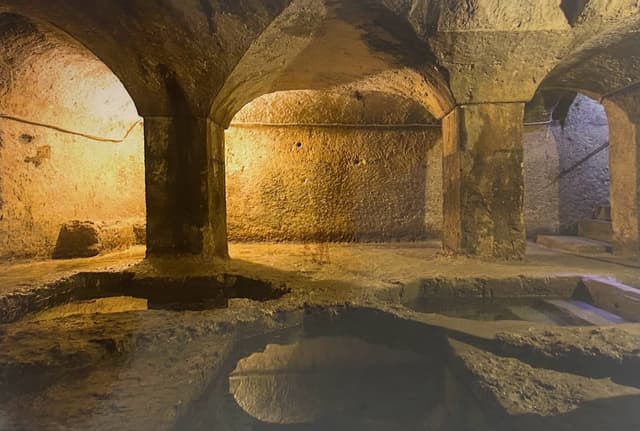
Continue on via G.B. Alagona, take a right on Vicolo al Forte Vigliena and walk until its end at the seaside, then turn left on via Nizza. Here you will come across the Papyrus Museum, focused on "the study, conservation and divulgation of the culture of the papyrus".
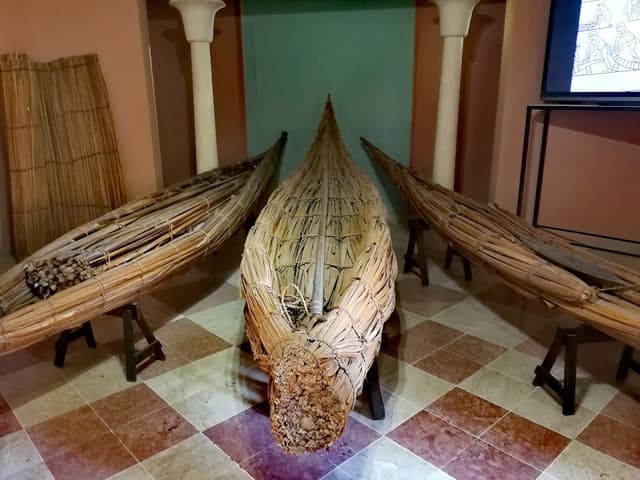
Spend some time wandering the various alleyways and streets of the Giudecca neighbourhood, visit a few boutiques and when you're ready, return to via Roma and Piazza Duomo again. You'll pass along the back end of the Duomo, and enter from a different perspective the suggestive atmosphere of this wonderful piazza, the beating heart of Ortigia. Enjoy the innumerable details of the Baroque buildings and also the changing colours of their stones in the different daylight.
After spending more time in Piazza Duomo, enter Piazza Minerva, then walk north on via Roma until you reach Piazza Archimede. This time, exit along busy via Corso Giacomo Matteotti, where you'll find examples of modern architecture and shops.
Piazza Duomo on a summer evening.
Where to Stay
Ortigia is by far the best area to stay in Siracusa. It is the most pleasant neighborhood for an evening stroll, filled with nice restaurants, shops and sea views. Where you choose to stay should be informed by how far you want to be from amenities like parking or the sea.
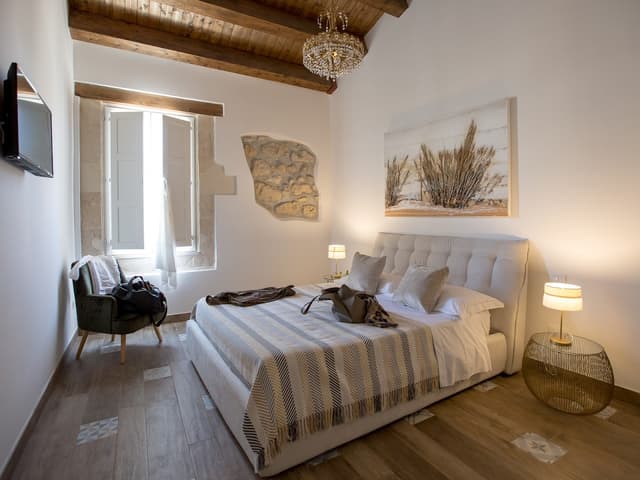
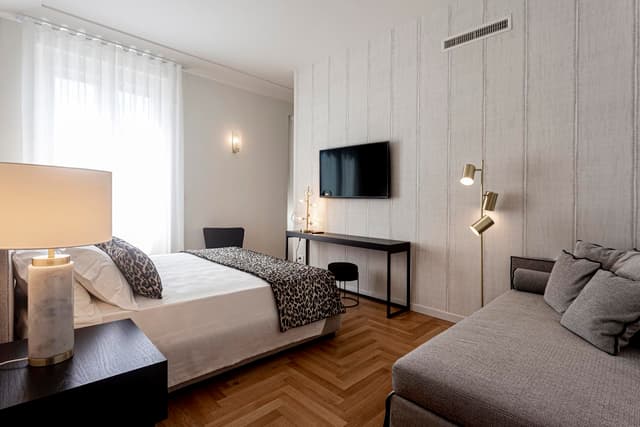
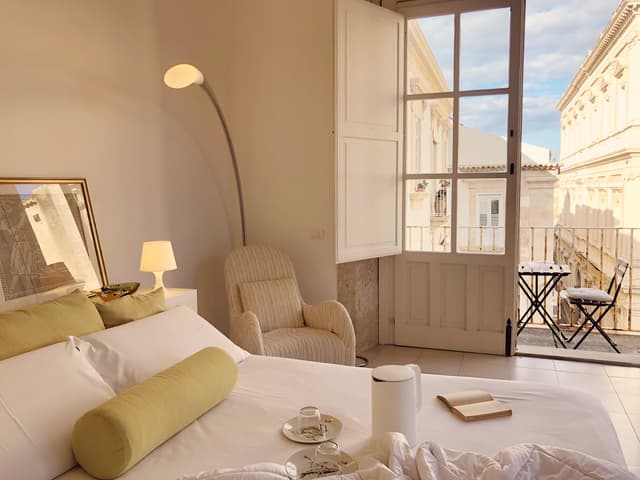

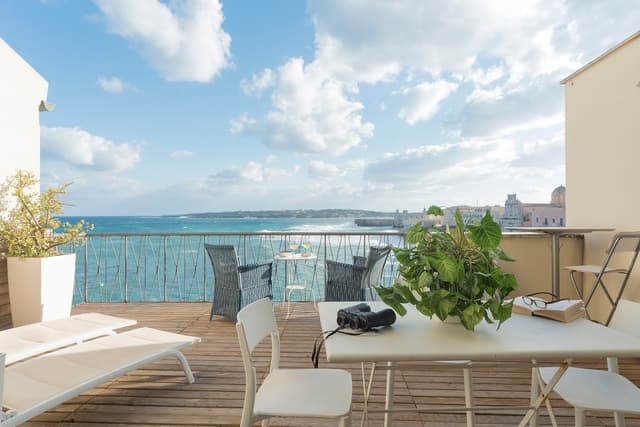
Practical Travel Information
🥾 Total distance: this route is about 2 miles, or 3.5 kilometers, and the ground is quite flat.
⌚️ How long this tour will take: plan at least 3-4 hours walking to see it all, which leaves time for stopping in a few different churches and museums described here, and obviously to savour a gelato or do some shopping in the unique boutiques along the way.
☀️ When to go: each season offers something different in Sicily, but the best time for enjoying Ortigia and when it is more vibrant is from May to October.
🎩 What to wear: this will obviously depend on the season and the weather conditions the day you visit Ortigia, but espeically in the summer, keep in mind that if you want to visit churches you will be asked to cover your shoulders and legs.
🚂 How to arrive in Siracusa: the closest airport is Catania (CTA), about 35 miles (60 kilometers) to the north. Buses run frequently to Siracusa directly from the airport and from Catania city center. Trains are avaliable from Catania main train station as well. Note that if you arrive to Siracusa by train or bus, you will need to walk 0.8 miles (1.3 kilometers) in order to reach the first stop of our tour. If you arrive by car, keep in mind that nearly the whole area of Ortigia is marked as a limited traffic zone - "ZTL" or zona traffico limitato in Italian - and you will receive a hefty fine if you drive into this area, so plan to park in the large parking lots immediately after the bridges or speak with your hotel about options they provide.
What else to do in Siracusa?
Ortigia is only the beginning of incredible discoveries you can make in Siracusa. Check out our full 3 day itinerary to Siracusa to discover more history, sites and unique places this outstanding city has to offer.
The home for unique & authentic travel
